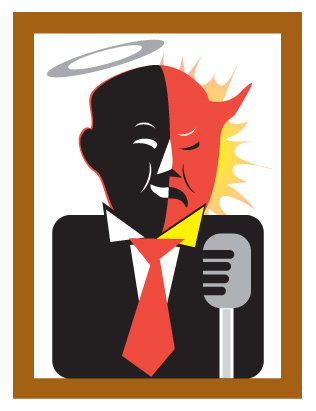 We all have a brand image. Does it match the reality of who
you really are?
We all have a brand image. Does it match the reality of who
you really are?
In the middle of a national election cycle, we are getting
our fill of brand images, aren’t we? Candidate A promotes himself as an all-American
leader of people – especially those who don’t have a voice and need someone to
stand up for them. Candidate B says she is the true leader of people – a
hard-working mother and trailblazer of commerce. She is the person who can
truly help the nation move forward. They both have ads with images of them
interacting with carefully selected people who all bear the resemblance of
someone we can relate to. The flag is waving, people are smiling (at least when
they are not wearing a mask), and we are bombarded with folksy images like a
Norman Rockwell canvas - school children, cornfields, farmers drinking coffee
at a local diner, with the candidate entering the frame with their family,
complete with their pet dog at the end of the ad. That is unless you are
watching an ad the opposition has put out. In that case, Candidate A is never
shown smiling. He is to blame for all that is wrong. He is the devil wearing
skin! But the same could be said of the opposition’s hit ad on Candidate B. She
is not a happy person in these ads and neither are the people around her. In
fact, the ad says she is the cause of their misery and pain.
Images matter in marketing. This is all a part of building a
brand. In marketing, we are tasked with not only building a positive brand
image for our company, but getting our customers to believe it. In politics,
and in business, the best way to do this is to keep it consistent with reality.
Here is a famous quote from a politician from several years ago:
You can fool all the people some of the time and some of the
people all the time, but you cannot fool all the people all the time.1
Abraham Lincoln
The
reality is, what you say about yourself will catch up with your actions in the
end. The truth eventually surfaces. For instance, if you say you produce your
branded products in the USA, but actually they are produced in an Asian
sweatshop, the truth will surface and your true image will not match what you
have branded yourself to be. Customers quickly leave hypocrisy behind. So when
you are building your brand and promoting it in your marketing, be who you
really are.
In
marketing, we tell people what to believe about us and they typically buy it. But
what happens when they challenge our brand image? For years, Gillette, the
razor company, promoted their men’s shaving razors with the tagline: The Best a Man Can Get. What a man can
get could be construed to have a double meaning and the razor company was fine
with that double entendre. However, in the wake of the Me Too movement, this
tagline was challenged. Gillette wanted nothing to do with the backlash, so
they changed the tagline to The Best a
Man Can Be.
If
you know what you want to stand for before you make the marketing claim, then
spend some time figuring out who you really are and if you need to shore up
your actions before you start promoting it. In other words, be who your are and
build your brand from there. If you don’t know who you are as a corporation,
you need to spend some time figuring that out before you wade into deep waters
and find out the marketing does not match the true image of your company.
______________
1.
Quote attributed to Abraham Lincoln during the Lincoln vs Douglas Debates in
1858.